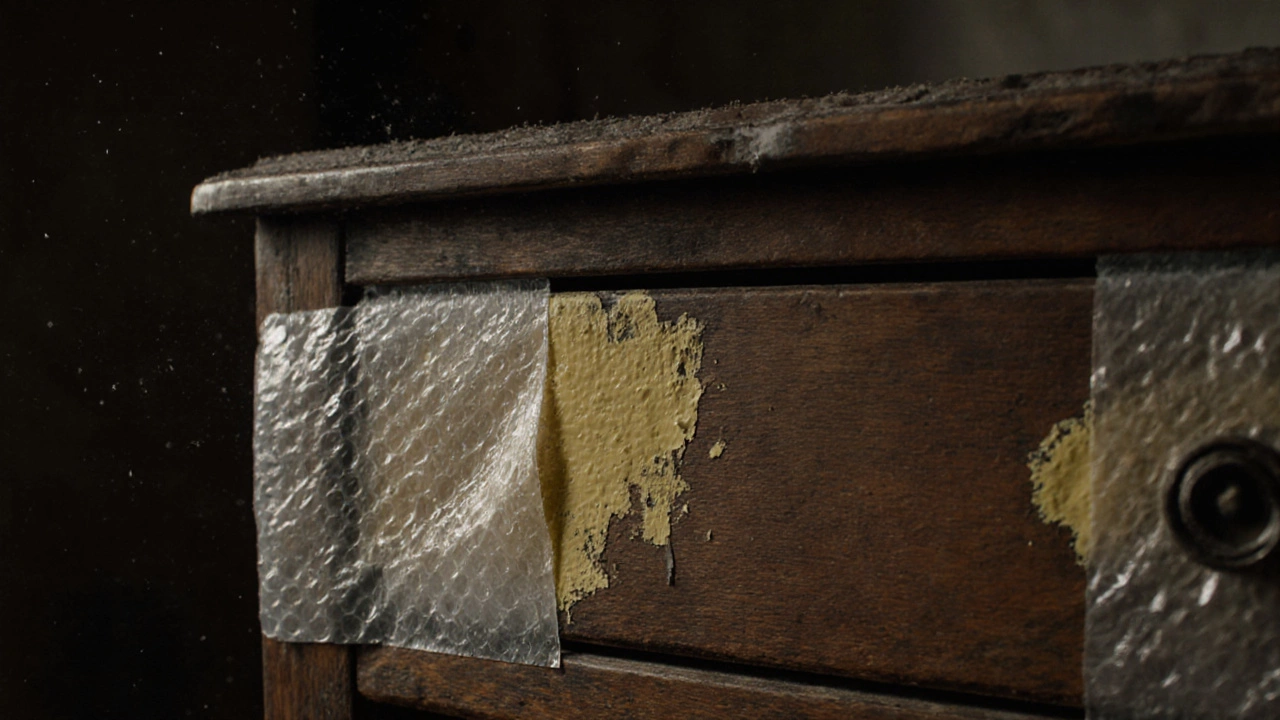When you store furniture, you’re not just putting it away—you’re trusting it to survive humidity, temperature swings, and time. Storage safety, the practice of keeping furniture intact during long-term or temporary storage. Also known as furniture preservation, it’s not about fancy covers or expensive climate-controlled units. It’s about understanding what actually breaks furniture—and how to stop it before it happens. In the UK, damp isn’t just a nuisance—it’s a silent destroyer. Wood swells, metal rusts, fabric mildews. And if your couch, bookshelf, or dining table ends up warped or smelly after storage, it’s rarely because of theft or accidents. It’s because no one checked the humidity.
Storage humidity, the invisible moisture level inside a storage space is the #1 enemy of wood and upholstery. A garage in winter might feel dry, but if it’s unheated and sealed, condensation builds on cold surfaces overnight. A shed might look clean, but if it’s on damp ground with no airflow, mold grows in weeks. You don’t need a hygrometer to know it’s bad—smell it. That musty odor? That’s your furniture breaking down. And furniture damp protection, the simple steps you take to block moisture from reaching your pieces isn’t about buying a dehumidifier. It’s about elevating your sofa off the floor, wrapping it in breathable cotton, and leaving space for air to move. Even a few inches of clearance makes a difference.
What you avoid matters as much as what you do. Plastic wrap traps moisture like a greenhouse. Never use it on wood. Cardboard boxes? They absorb damp and turn to mush. And never store furniture directly against an outside wall—even in a self-storage unit. Heat rises, cold sinks, and moisture follows. The best storage spots are dry, ventilated, and level. If you’ve ever seen a vintage dresser with legs eaten by rot, or a leather armchair with black spots, it started with one thing: damp got in and no one noticed until it was too late.
Storage safety isn’t just for heirlooms. It’s for your sofa from last year’s move, your spare dining set, or that oak bookcase you’re keeping until the new house is ready. It’s not complicated. It’s not expensive. But it’s easy to ignore—until you open the storage unit and see the damage. The posts below give you real, tested methods from people who’ve been there: how to use silica gel packs, why ventilation gaps matter, which fabrics can handle damp, and what to do if your wood starts to swell. You won’t find fluff here. Just what works in the UK climate.

Bubble wrap is handy for moving, but it's not safe for long-term storage. Learn why it can damage antiques, electronics, and fabrics over time-and what materials to use instead.
More